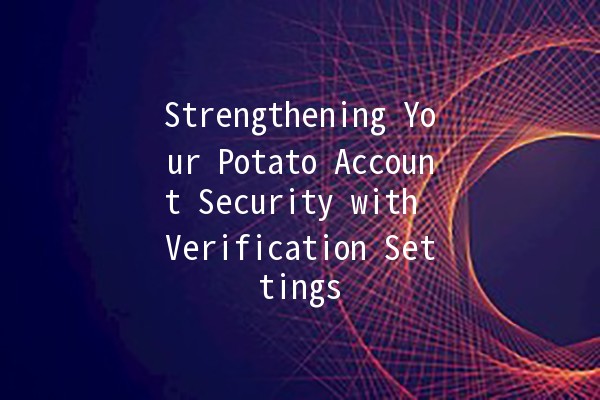In today’s digital world, account security is more important than ever. As a Potato account user, it is crucial to ensure that your personal information and data are protected from potential threats and unauthorized access. Setting up security verification is one of the most effective ways to safeguard your account. This article will explore essential verification settings for your Potato account, provide practical productivityenhancing tips, and guide you on how to implement these solutions effectively.
Understanding Potato Account Security
Before diving into verification settings, it's essential to understand what security entails for your Potato account. This includes protecting your account from unauthorized access, detecting suspicious activities, and ensuring that your personal information remains confidential.
Why Verification Settings Matter
Verification settings act as an additional layer of security beyond just a password. When you enable these features, you significantly reduce the chances of a cyberattack on your account. In fact, according to cybersecurity statistics, adding twofactor authentication (2FA) can prevent over 90% of unauthorized access attempts.
Key Security Verification Settings
Twofactor authentication (2FA) requires two forms of identification before allowing access to your account. This could be something you know (your password) and something you have (a mobile device).

How to Implement:
Inside your Potato account settings, navigate to the security section.
Choose the option to enable 2FA.
Link your mobile phone number or download an authenticator app like Google Authenticator.
Follow the prompts to complete the setup.
Productivity Tip: Utilize an authenticator app for quicker access rather than relying on SMS. Not only does it improve security, but it also speeds up your login process.
One of the simplest yet most effective security practices is regularly updating your passwords.
How to Implement:
Make it a habit to change your Potato account password every three to six months.
Use a combination of upper and lower case letters, numbers, and symbols to create complex passwords.
Productivity Tip: Consider using a password manager to store your passwords securely. This way, you won't have to remember every single one, and you can generate strong, random passwords for each of your accounts.
Regularly checking your account activity helps you spot unauthorized logins or suspicious behavior. Potato accounts usually provide a feature where you can view your recent activity.
How to Implement:
Log into your Potato account and look for the 'Recent Activity’ section.
Review login locations and times. If anything seems suspicious, change your password immediately and log out of all devices.
Productivity Tip: Set a calendar reminder every month to review your account activity. This small step can lead to big security gains.
When linking thirdparty applications to your Potato account, be cautious. Each app can have varying levels of access to your data.
How to Implement:
Review the permissions requested by each app before you allow them access to your Potato account.
Regularly check the apps connected to your account and revoke access for any outdated or unrecognized applications.
Productivity Tip: Regularly audit your app connections and permissions. This can save you from potential data breaches by apps that you no longer use.
It's crucial to establish recovery options in case you ever lose access to your account. This could involve setting up security questions or adding additional email addresses.
How to Implement:
Go to the Security section of your Potato account.
Add a recovery email and mobile number that can be used should you need to regain access.
Productivity Tip: Choose security questions that are memorable but not easily guessable. This extra layer can help you regain access to your account more straightforwardly without compromising security.
Common Questions Users Have About Potato Account Security
If you suspect unauthorized access, immediately change your password. Check your recent activity for any suspicious logins and enable twofactor authentication if you haven’t already. Make sure to report the incident to Potato support for additional help.
A strong password should be at least 12 characters long, combining upper and lowercase letters, numbers, and special characters. Avoid using easily guessable information like birthdays or family names.
Using public WiFi can expose your account to potential hacking attempts. If necessary, avoid logging in to sensitive accounts while on public networks. If you must use it, consider using a VPN for added security.
It’s recommended to change your password every 36 months, or immediately if you feel your account may have been compromised. Consistently updating your password contributes to overall security.
If you lose access to both, contact Potato support immediately. They may ask for additional verification methods to help restore access to your account.
Yes! You can link twofactor authentication to multiple devices, such as your phone and your home computer, ensuring you always have a backup access method.
Enhancing Security and Productivity
Enhancing your Potato account security doesn't just protect your personal information; it also boosts your overall productivity. When your data is secure, you can focus more on your tasks rather than worrying about potential breaches. Keeping security practices at the forefront allows for a smoother user experience.
By implementing the provided suggestions, such as enabling 2FA and regularly auditing your security options, you can significantly enhance your account's safety. Take the proactive approach to account management and implement these straightforward methods to enjoy a more secure and productive digital life.
Remember: security is not just about protecting your information—it’s about creating peace of mind while you navigate the online world.